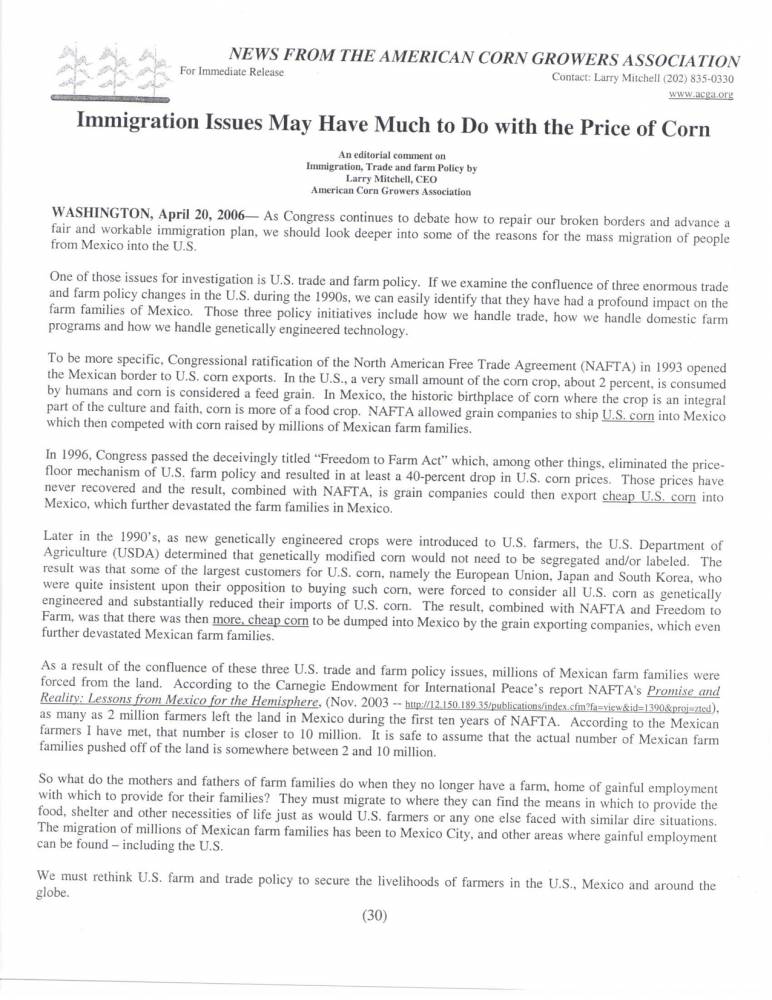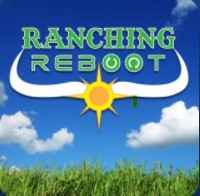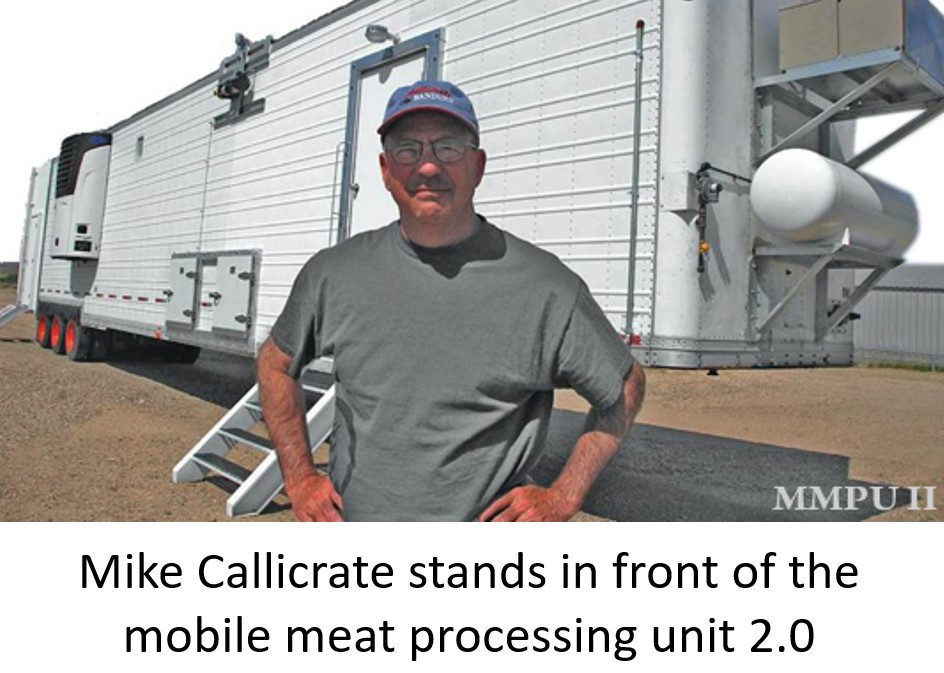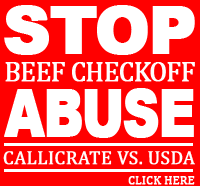Stay Informed!
Subscribe to information and news updates related to farming, food and health issues, click here!-
 “The money and political power of Wall Street has stolen America’s food system, bankrupted our farmers and ranchers, mined our soils, polluted our environment, wasted our precious water, and left us with expensive industrially produced food that makes us sick.” – Occupy Wall Street Food Day, December 2011
“The money and political power of Wall Street has stolen America’s food system, bankrupted our farmers and ranchers, mined our soils, polluted our environment, wasted our precious water, and left us with expensive industrially produced food that makes us sick.” – Occupy Wall Street Food Day, December 2011 -
Above: Ranching Reboot – Episode 4 – Mike Callicrate, owner of Ranch Foods Direct, sat down with us to talk about all manner of things from cattle markets, to public food spaces, the Bander, his feedlot and the pathway he built to market.
He shares valuable lessons learned from fighting against the commodity production system and how he’s built his own pathway to the consumer.
We talk about small community slaughter plants and public meat spaces and what that could look like going in to the future. We discuss environmental challenges, the food police and what it means when a Dollar General comes to town.


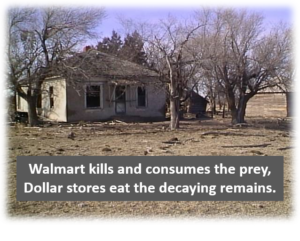
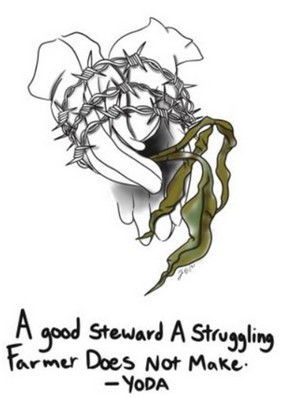
- This Cattleman's Got A Beef
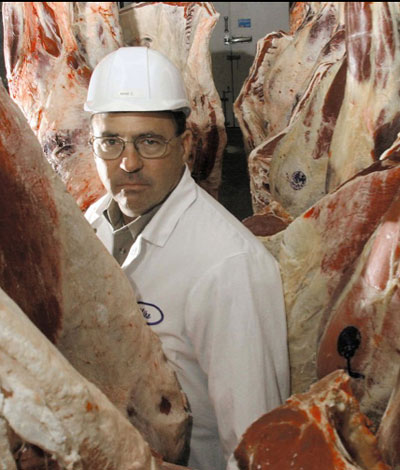 Photo: Sean Cayton - 2003People producing good food from happy animals, while improving the environment, shouldn’t have to fear the government.
Photo: Sean Cayton - 2003People producing good food from happy animals, while improving the environment, shouldn’t have to fear the government.
Photo above featured in a 2003 article: This cattleman's got a beef, Mike Callicrate and Ranch Foods Direct take on the big meat packersby Kathryn Eastburn Categories
Food Policy & Law
E. Coli Confessions Part I
by John Munsell | Oct 11, 2011
Opinion
Editor's Note: This is the first part in a series written by John Munsell of Miles City, MT, who explains how the small meat plant his family owned for 59 years ran afoul of USDA's meat inspection program. The events he writes about began a decade ago, but remain relevant today.
They say that confession is good for the soul. I've been involved in a series of ugly events since my plant in 2002 recalled 270 pounds of ground beef contaminated with E.coli O157:H7 and now want to admit the embarrassing truth for public review. moreTags
- advanced meat recovery
- antibiotics
- beef checkoff
- Big Food
- BPI
- Callicrate
- Callicrate Beef
- Callicrate Cattle Co.
- Cargill
- Chipotle
- Colorado Springs
- COOL
- Dudley Butler
- e. coli
- Eric Schlosser
- fast food nation
- food Inc.
- Foodopoly
- GIPSA
- HSUS
- IBP
- Industrial Agriculture
- JBS
- McDonald's
- meat packers
- Mike Callicrate
- Monsanto
- NCBA
- OCM
- Organization for Competitive Markets
- pink slime
- R-CALF
- Ranch Foods Direct
- Rick Hughes
- Smithfield
- Sodexo
- steroids
- Sysco
- Tom Vilsack
- Tyson
- U.S. Farmers and Ranchers Alliance
- USDA
- Vandana Shiva
- Walmart
- zilmax
National News Supplement
Considering additional trade agreements? NAFTA removed between 2 and 10 million Mexican farmers from the land
New Public Market coming to Colorado Springs
COLORADO SPRINGS, Colo. –
Developers and community members are working on a public market near downtown Colorado Springs.
Part of the former Gazette building, off Pikes Peak Avenue just east of downtown, will be turned into the Colorado Springs Public Market. The project is a partnership between community members and Nor’wood Development Group.
“What we want it to be is a place of energy, a place where you can get great food, locally-produced food,” project board member Mike Callicrate said.
Organizers want it to be a place for local food and other goods. They plan on having a place where people can eat and have events.
“We want a gathering place, where people in the area can get together,” Callicrate said. “There’ll be arts, just a lot of social stuff going on.”
Project organizers said they want the market to be community-owned, and plan to invite the public to invest in it. Callicrate also said they want the community’s input on what it should look like. He said it could be up and running by next spring.
Source: New Public Market coming to Colorado Springs
Copyright 2014 KRDO.
Special Report: The End of the Trail – How Government Destroyed Free Markets for Family Ranchers
Secretary of Agriculture Tom Vilsack’s inaction has led to the near-destruction of American family ranchers. Over 17,000 family ranches will disappear this year. Over 100,000 family ranchers have left the profession since 2009. It’s a tragedy as world-renowned American beef experiences record-high prices, grocery retailers seize increasing shares of beef dollars, meat packers manipulate the beef market and prices paid to ranchers, and the ranchers are denied the rewards resulting from raising the best cattle in the world. The problem is made worse because government refuses to enforce the antitrust and GIPSA laws enacted over one hundred years ago to protect consumers and ranchers. The ranchers’ trade associations have been commandeered by pharmaceutical companies, meat packers, and multi-national agricultural companies. Ultimately, America’s food security is at risk and the prices you pay will rise as government allows the end of free markets and family ranchers. This is a special report deserving your attention. The printed report is available in the show’s viewer.
Guests: Robert Taylor, Bill Bullard, Dudley Butler, Mike Callicrate
Learn more at: Organization for Competitive Markets
Music Featured:
“Hard Times” – Don Edwards
American History Minute:
Joshua Chamberlain
Callicrate states “NO” for Missouri “Right To Farm” – In MO Vote NO on Amendment 1
Multinational and foreign corporations aren’t family farmers and they aren’t citizens of Missouri. Family farmers already enjoy the “Right to Farm” in Missouri. These strip mining, wealth extracting corporations shouldn’t be allowed protection under the Missouri constitution for their economic, social, and environmental destruction in the state. Vote NO on Amendment 1, protect the interests of family farmers and consumers in Missouri.
LEARN MORE: Missouri Amendment One; An Easier Road to Multinational Corporate Food Takeover:
VIDEO: “This is our constitution, corporations stay out!” – Lt. Governor Joe Maxwell
Food Hero: Will Harris, Sustainable Livestock Producer Winner of the Growing Green Awards 2014

Will Harris turned his back on conventional farming and adopted a profitable business model for sustainable livestock production. (Youtube)
Every year, the Growing Green Awards honor exceptional leaders and innovators committed to sustainable food and agriculture. Hosted by the Natural Resources Defense Council (NRDC) and the Berkeley Food Institute (BFI) in San Francisco, the 2014 awards have been given to four individuals chosen among hundreds of other candidates across the United States. Winners have been awarded in four categories: Sustainable Livestock Producer, Sustainable Food and Farm Educator, Pollinator Protector, and Regional Food Leader.
“We are delighted to recognize these inspiring leaders. They have undertaken remarkable work to advance sustainable food and agriculture systems through innovative approaches,” said Ann Thrupp, Executive Director of the Berkeley Food Institute.
Will Harris, from the White Oak Pastures farm in Georgia, is the winner in Sustainable Livestock Production.
After decades of raising cattle on pastures purged by pesticides and finishing them on a diet of grain, hormones and antibiotics, Will Harris drastically changed his practices and converted to organic and grass-fed. His Southwest Georgia farm, White Oak Pastures, has been in Harris’ family since 1866. Yet, by the mid-1990s, Harris started to rethink the conventional shortcuts he used to push his cows to the feedlot. Instead of applying toxic chemicals and synthetic fertilizers, Harris learned to prevent overgrazing, protect water resources, and generally promote soil health through intensive land management and rotational grazing. He went further, sending multiple species (five kinds of poultry, hogs, sheep and goats) through his fields in sequence to control weeds and insects. Green pastures now nourish his animals, which in turn aerate and enrich the land with natural fertilizer. In order to respect his livestock from birth to death, Harris constructed a humane-kill abattoir on site (designed with help from Temple Grandin). He proved his business model is scalable, growing White Oak Pastures from a half million dollar enterprise to the largest organic certified farm in Georgia, taking in over US$25 million, annually.
Read Will’s blog post: From Factory Farm to Grass-fed Money Maker
by Nicolas Giroux, Research and Communications Contributor
Young French passionate about sustainable agriculture, Nicolas has an international background in business and cooperation. http://tiny.cc/NicolasGiroux

